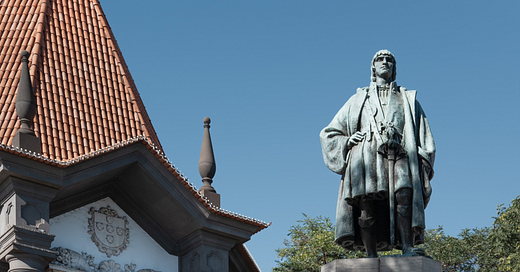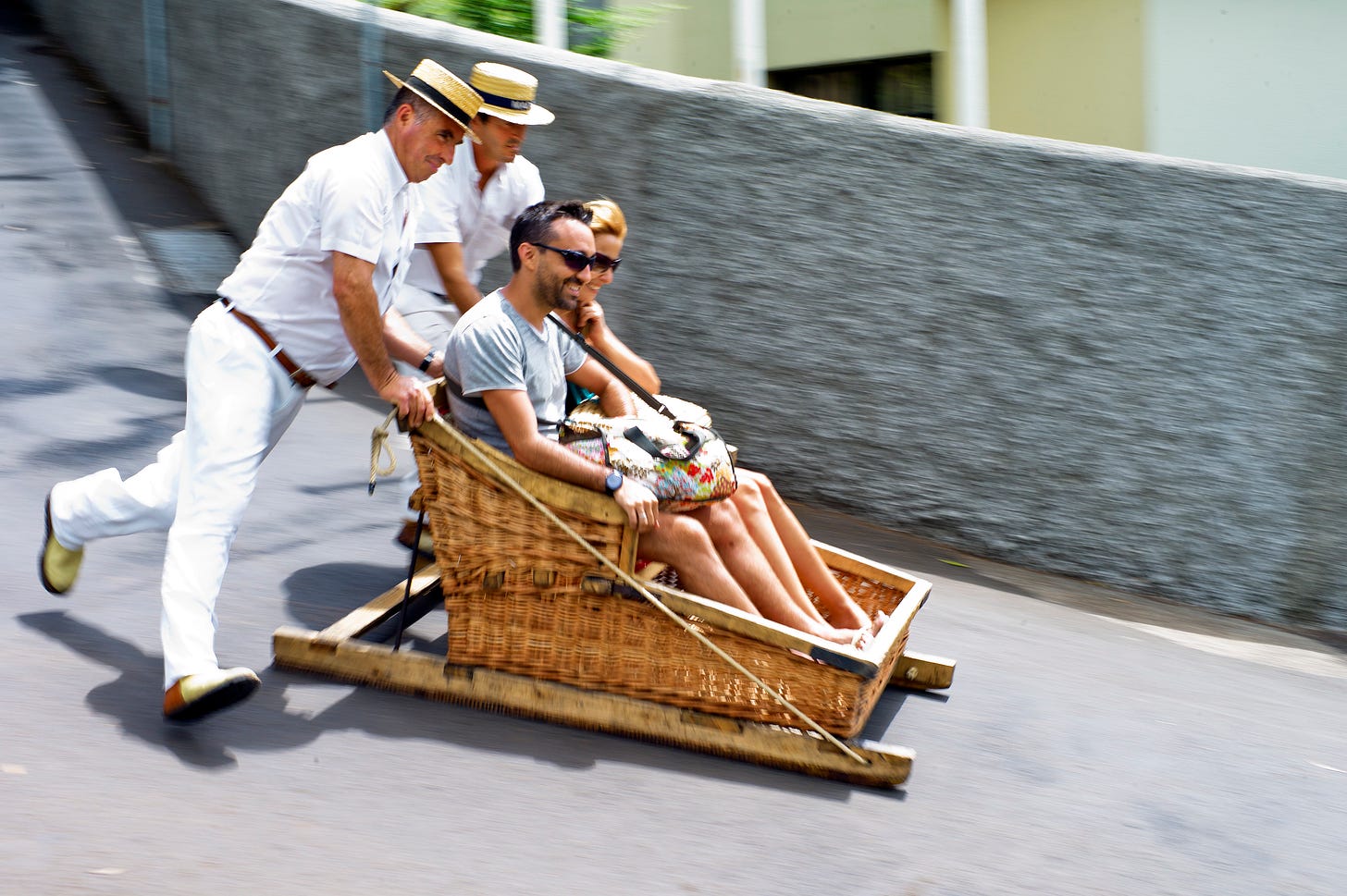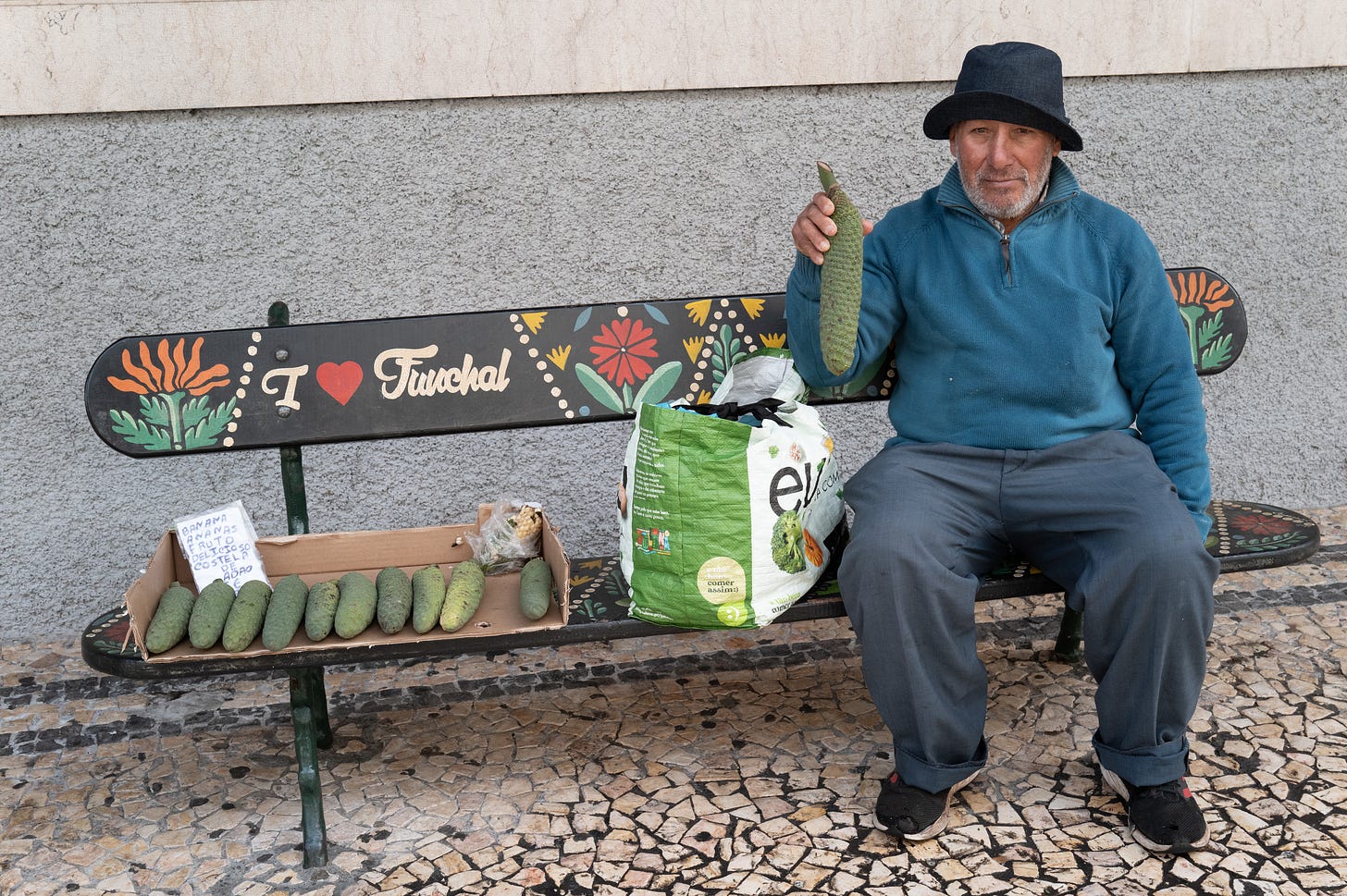We had to get away. Away from the gloom, damp and ugly grey clouds scudding overhead from the nearby Brecon Hills. We headed to the speck in the Atlantic Ocean that is Madeira. The island was discovered by João Gonçalves Zarco in 1419 (that’s him on the pedestal in the picture below) and became part of the growing Portuguese empire of the 15th century. The occupation of the island began by three mainland nobles gallantly agreeing to marry Zarco’s three daughters and settle down in Madeira. Later, Christopher Columbus briefly stayed on the island to hone his navigational skills
The capital, Funchal, is a heady mix of old Portuguese style quintas and the brash architecture synonymous with modern tourism. The old town still retains a certain charm, however, with an obsession for paintings on street doors. Many of these are worth stopping and noticing, others scarcely worth a second glance. But everywhere the squares and streets are laced with small black and white tiles often patterned into waves. It is as if the waves of the Atlantic have come ashore.
Much of the island is seriously mountainous, the uplands punctuated with man-made ravines to allow the frequent torrential downpours to drain off the hills into the sea. Perched on top of the mountainous basin that surrounds Funchal is a gem: the gardens of the Monte Palacio. Tropical plants and trees line multiple pathways descending to a lake guarded by pink flamingos. The Monte peak can be ascended by cable car, with many visitors choosing the less sedate descent offered by sitting on a basket chair propelled along by two white suited gentlemen at breakneck speed. Miraculously, their straw boaters remain firmly fixed on their heads as they swerve downhill around bends and corners.
Everywhere in Madeira you can see decoration crafted out of beautiful blue and white glazed tiles so familiar to visitors to Portugal, many celebrating historical events and religious tableau. As always, Liane and I enjoy watching the world go by as we linger over our morning coffees. The Madeirans are a friendly lot and will cheerfully engage with you as you pass along the narrow streets.
For us, the highlight was an evening in Sylvia’s ‘Sabor a Fado’ restaurant. Sylvia greets her guests in turn with a hug and diners share long tables. Fado, for the uninitiated, is the uniquely Portuguese melancholic folk singing accompanied by a guitar that resembles more a lute. The lyrics are full of lament for good times and loves lost, tinged with a longing for a return to Portugal from faraway places. All Sylvia’s family joined the singing, as well as serving some of the best food that we have ever had in Funchal. I challenge anyone not to be moved by experiencing an evening listening to fado.
For those of a particular photographic persuasion, this was my first serious outing with my new Leica Q3.43. The APO lens is outstanding. It felt very comfortable to use: my criterion for a good camera is that I forget what I have in my hand and can concentrate on my picture taking. What more is there to say …








